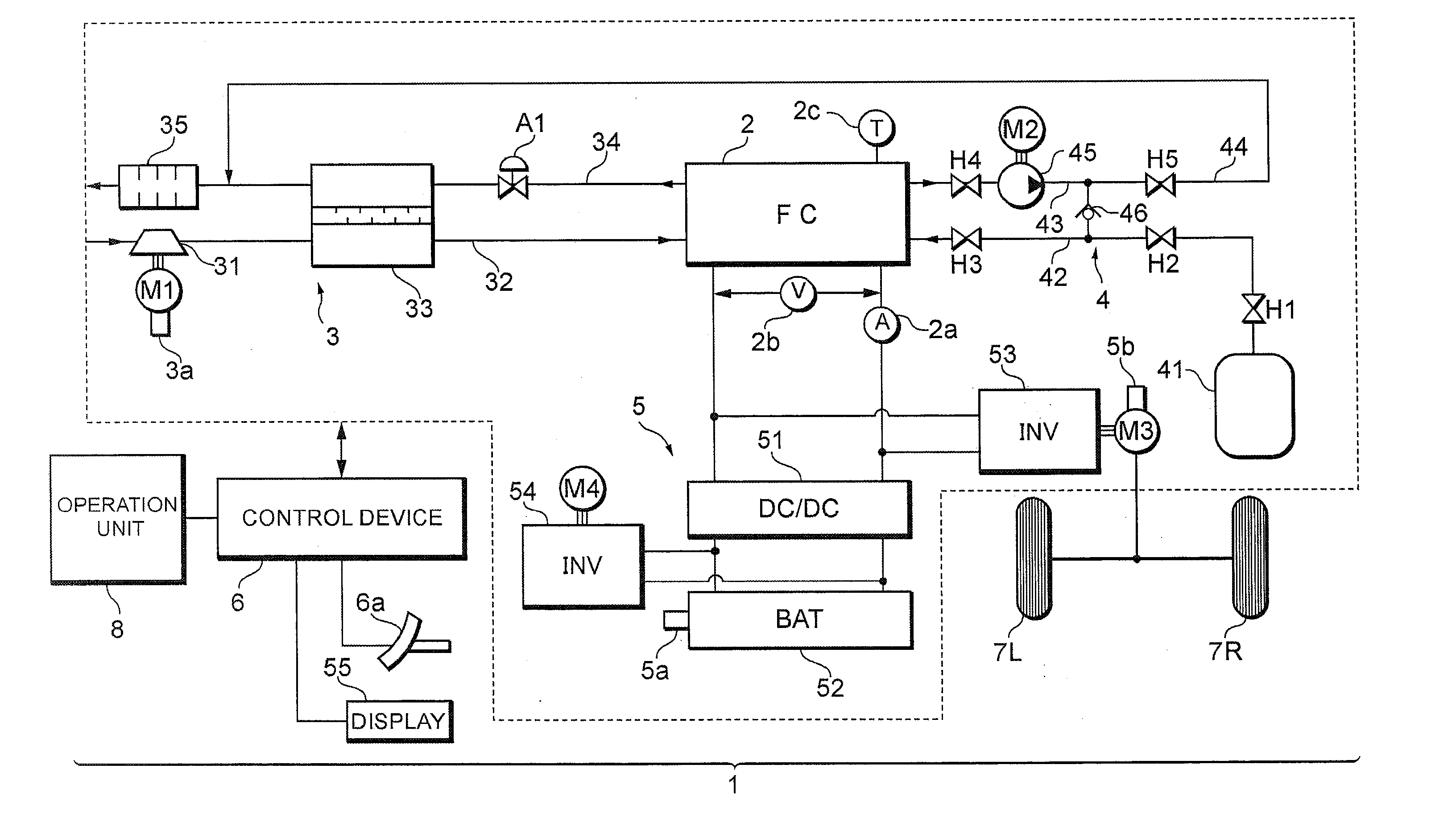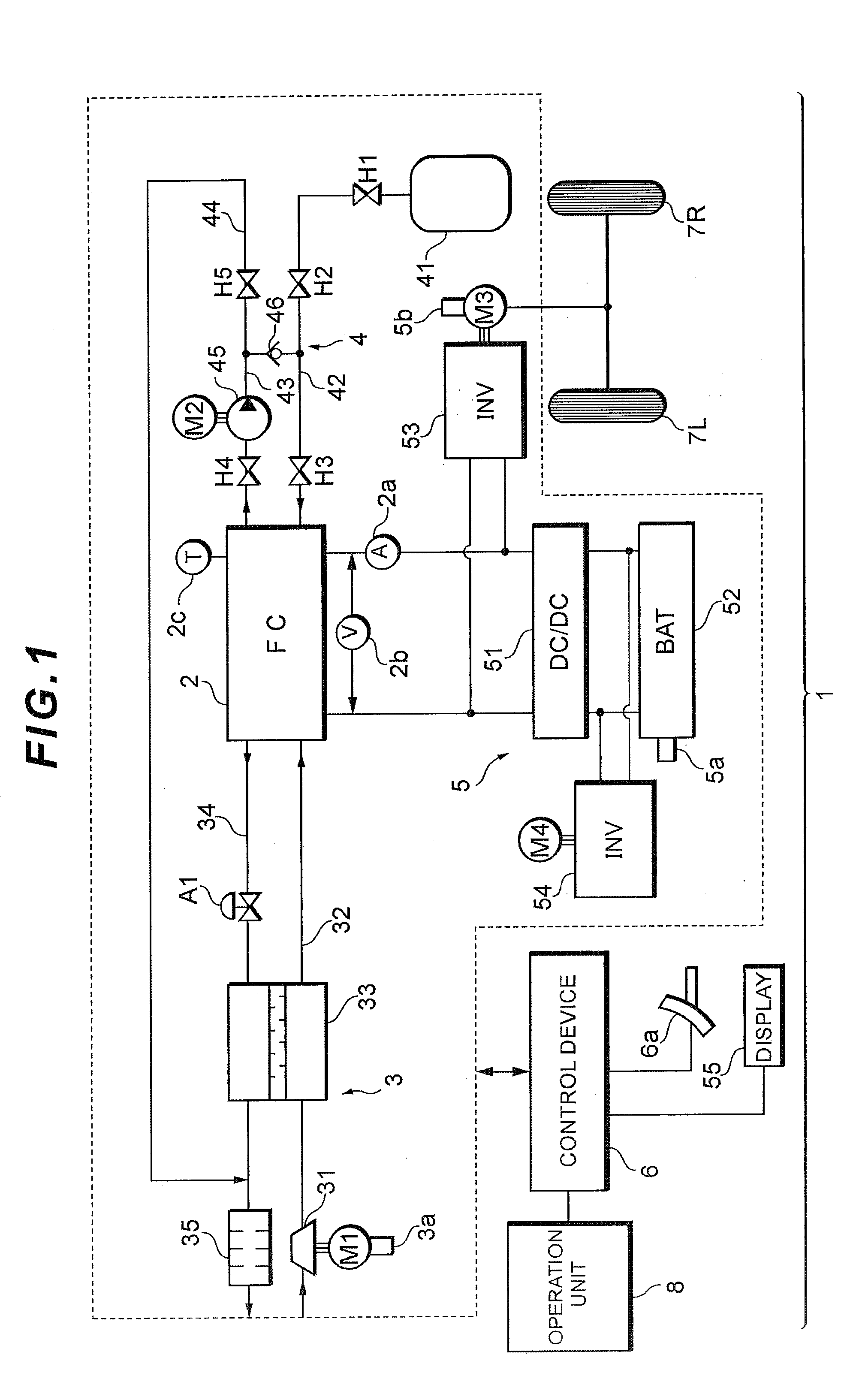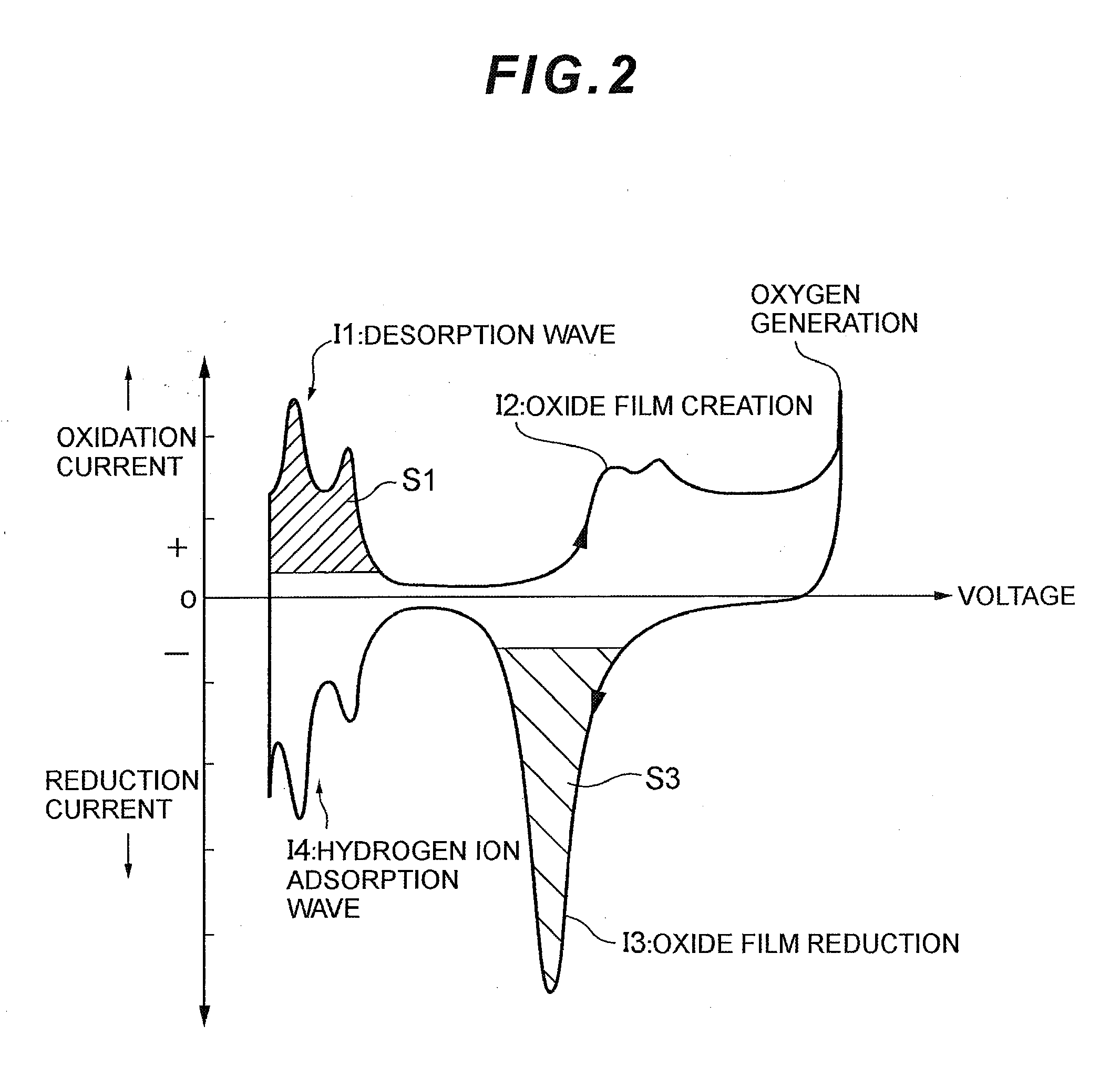Fuel cell system, electrode catalyst degradation judgment method, and moving body
a fuel cell and electrode catalyst technology, applied in the direction of cell components, instruments, electrochemical generators, etc., can solve the problem that the processing is not sufficient for diagnosis
- Summary
- Abstract
- Description
- Claims
- Application Information
AI Technical Summary
Benefits of technology
Problems solved by technology
Method used
Image
Examples
embodiment 1
[0027]The present embodiment describes an example where the present invention is adapted to a vehicle-mounted electric-power generation system for a fuel cell hybrid vehicle.
[0028]Referring now to FIG. 1, the configuration of a fuel cell system 1 according to the present embodiment will be described below.
[0029]As illustrated in FIG. 1, the fuel cell system 1 of the present embodiment includes a fuel cell 2 that generates electricity in response to supply of reaction gas (oxidation gas and fuel gas) and generates electric power from the electricity generation, an oxidation gas piping system 3 that supplies air as the oxidation gas to the fuel cell 2, a fuel gas piping system 4 that supplies hydrogen gas as the fuel gas to the fuel cell 2, an electric-power system 5 that charges and discharges electric power of the system, a control device 6 that controls the system as a whole, and the like.
[0030]The fuel cell 2, for example, is configured as a solid polymer electrolyte type, and inc...
embodiment 2
[0075]The above-stated Embodiment 1 describes the method of decreasing output voltage (overall voltage) of the fuel cell 2 for the measurement of the cyclic voltammetry (CV) to control the overall voltage over a predetermined range variably, thus detecting current in response to a change in the overall voltage. However, the measurement of cyclic voltammetry may be conducted based on detection voltage for each cell.
[0076]FIG. 4 illustrates a cell voltage monitor to implement Embodiment 2.
[0077]As illustrated in FIG. 4, Embodiment 2 is provided with a cell voltage monitor 56 that detects voltage of each cell included in a cell group making up the fuel cell 2, instead of the voltage sensor 2b.
[0078]Embodiment 2 operates for the measurement of cyclic voltammetry (CV) to detect output current of the fuel cell associated with a change in voltage of each cell by the above-stated current sensor 2a, for example, while monitoring the voltage of each cell detected by the cell voltage monitor ...
embodiment 3
[0081]In the above-stated Embodiment 1, an effective area is found by integration for a distinctive part of voltammogram obtained by the measurement of cyclic voltammetry (CV), which is then compared with a degradation decision value. On the other hand, in Embodiment 3, a decision is made based on an absolute value of output current as to whether electrode catalyst is degraded or not.
[0082]FIG. 5 illustrates a current-electrical potential curve (voltammogram) corresponding to the degree of oxidation of electrode catalyst.
[0083]As is evident from FIG. 5, it can be understood that absolute values of output current in characteristic I3 and characteristic I1 also greatly change as electrode catalyst is degraded. Thus, in Embodiment 3 an absolute value of output current is compared with a degradation decision value, so as to decide whether the electrode catalyst is degraded or not. To this end, the degradation decision value is set beforehand so as to decide whether the electrode catalys...
PUM
 Login to View More
Login to View More Abstract
Description
Claims
Application Information
 Login to View More
Login to View More - R&D
- Intellectual Property
- Life Sciences
- Materials
- Tech Scout
- Unparalleled Data Quality
- Higher Quality Content
- 60% Fewer Hallucinations
Browse by: Latest US Patents, China's latest patents, Technical Efficacy Thesaurus, Application Domain, Technology Topic, Popular Technical Reports.
© 2025 PatSnap. All rights reserved.Legal|Privacy policy|Modern Slavery Act Transparency Statement|Sitemap|About US| Contact US: help@patsnap.com



